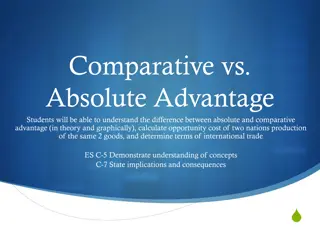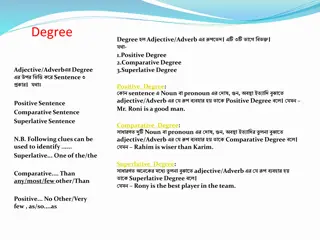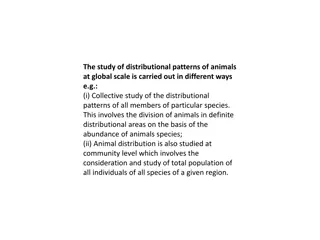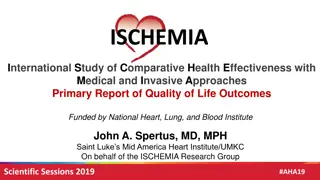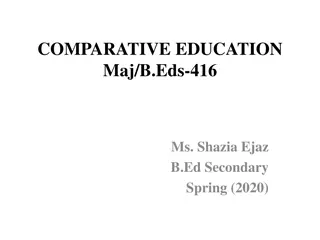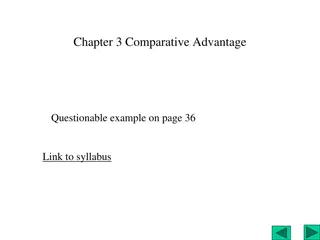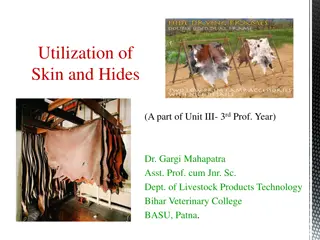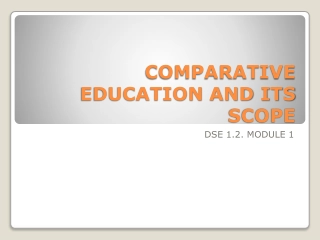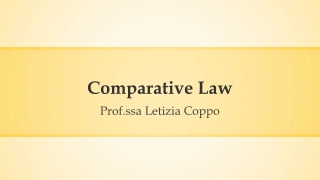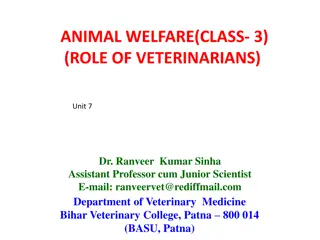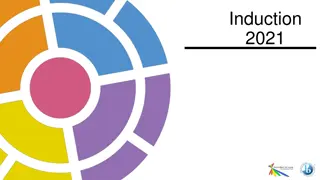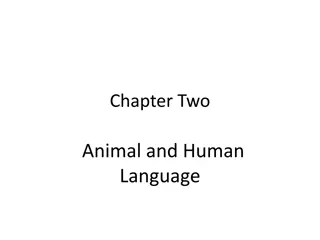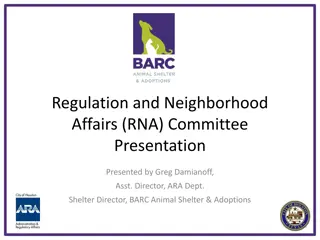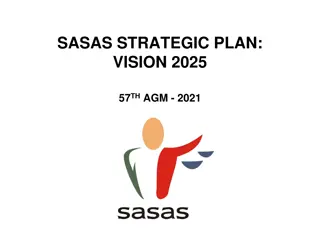Comparative Study on Methods of Working in Animal Skins Worldwide
Explore the diverse techniques, materials, and tools used by various societies around the world to work with animal skins. This exercise delves into the cross-cultural differences in skin-working technologies, the ecological relationships reflected in material choices, and the social contexts of skinwork practices. Enhance your understanding of different cultural approaches to working with hides and gain insight into resource utilization and technology adaptation across societies.
Uploaded on Sep 13, 2024 | 0 Views
Download Presentation

Please find below an Image/Link to download the presentation.
The content on the website is provided AS IS for your information and personal use only. It may not be sold, licensed, or shared on other websites without obtaining consent from the author. Download presentation by click this link. If you encounter any issues during the download, it is possible that the publisher has removed the file from their server.
E N D
Presentation Transcript
WORK IN SKINS Worldwide ComparisonsExercise Adapted from Teaching eHRAF Exercise 2.4 Hide Working and Tanning Leather by Christiane Cunnar
WORK IN SKINS In this exercise,you will compare methods, materials, and toolsusedby societies across the world to work in animalskins Fes Tannery. Men conditioning hides. By Patrick MorinCC- BY-SA-3.0 via WikimediaCommons This Teaching Exercise is provided by the Human Relations Area Files at Yale University in New Haven, CT
This Teaching Exercise is provided by the Human Relations Area Files at Yale University in New Haven, CT EXERCISE DETAILS TIME: 40 minutes MATERIALS REQUIRED: HRAF Access Worksheet and pen or other materials for recording answers STUDENT LEARNING OUTCOMES: Atthe end of this assignment, you will be able to: explain and analyze cross-cultural differences in technology for working in skins across multiple culture groups describe the material traces left by various stages of work in skins analyze how technologies for work in skins reflect a culture s access to different natural resources describe the social context of work in skins across multiple societies gain experience in team based secondary data collection and analysis techniques construct effective and efficient search strategies in eHRAF in order to retrieve data relevant to a specific topic/assignment.
METHODS OF WORK IN SKINS REVEAL ECOLOGICAL RELATIONSHIPS Left Image:CreeWoman working ona largemoosehide-Waterhen Riverarea, NorthernSaskatchewan. By ProvincialArchivesof Alberta. Publ Domain Image via Wikimedia Commons. Upper Right Image: Fez Tannerty. Michal Borowski CC by SA 3.0Vi12Ham This Teaching Exercise is provided by the Human Relations Area Files at Yale University in New Haven, CT
ECOLOGICAL RELATIONSHIPS The materials used for softening and preserving hides as well as dying them reflect a culture s access to different natural resources. Cultures located in coastal areas or in proximity to waterways, such as the Yakut of Siberia, often use fish products such as fish oil or fish liver as softening agents to process hides. Omul Fish being prepared for smoking. Photo By Jan van der Crabben CC BY-SA 2.0via Wikimedia Commons This Teaching Exercise is provided by the Human Relations Area Files at Yale University in New Haven, CT
Blue Oak Bark by Yath atthe English language Wikipedia CC-BY-SA-3.0 via WikimediaCommons The Tarahumara of Mexico use tree products such as pulverized oak bark for tannins. TARAHUMARA This Teaching Exercise is provided by the Human Relations Area Files at Yale University in New Haven, CT
This Teaching Exercise is provided by the Human Relations Area Files at Yale University in New Haven, CT PAWNEE The Pawnee of the northern Plains (now Nebraska) use elm bark. Elm Bark. Photo by Ptelea at en.wikipedia. Public Domain Imagevia Wikimedia Commons
Toivo Immanuel Itkonen (1984) reports that the Saami in Northern Europe made red leather by using alder bark, mixed with ashes and warm water. SAAMI Alder Bark. By Walter SiegmundCC-BY- SA-3.0 via WikimediaCommons
ASSIGNMENT PART 1 In groups of 5 members, have each individual select one word or term from the list below. List of agents used in hide work in and dyeing Brains (from animals) Fish Liver Salt Oil Bark Fat Butter Lime Water
A Cree woman cleans green deer hides prior to tanning them. 1939. Unknown Photographer. Department of the Interior, Bureau of Indian Affairs. Red Lake Agency. Public Domain Image. Each individual should now conduct an advanced search for OCM subject "work in in skins" in combination with the chosen terms from the list. *For help with Advanced Searches ineHRAF World Cultures, clickhere. ASSIGNMENT PART 1: Execute TheSearch
ASSIGNMENT PART 1 While researching their materials, each group member should fill in a data table, such as the following example. Cross-Cultural Use of Material X for Work in Skins How Materialis Used Specialnotes SocietyName Society A Applied to hides before tanning (Efuwozor 2016) By women, in large groups of 40 (Dane 2016). Gathered by children (Ellis 2010). Applied to hasten the tanning process (Ellis 2010) Also used to soften leather (Cane 1990) Applied by men, with tanning work done by women. Secretive process of aquiring it (Cane 1990). Society B This Teaching Exercise is provided by the Human Relations Area Files at Yale University in New Haven, CT
ASSIGNMENT PART 2 As a group answer the following questions for each material. (5 minutes for each material) Question 1: What common steps, access, or spaces are needed to acquire this material across multiple societies? British Women Working in Tannery in Nottingham. UnknownPhotogrtapher. 1914. UBC Library Digitization Centre via Wikimedia Commons. Public DomainImage This Teaching Exercise is provided by the Human Relations Area Files at Yale University in New Haven, CT
This Teaching Exercise is provided by the Human Relations Area Files at Yale University in New Haven, CT ASSIGNMENT PART 3 As a group select the two tables with the most detailed information about materials. As a group, discuss and answer the following questions for both materials. Question 2. Is there a gender, class, age group, or population subset, most likely to be using this material? Explain. (5 minutes) Question 3. What evidence would the harvesting and use of this material leave in the archaeological record? (5 minutes) Inuit Woman DressingWalrus Skin. Alaska, N.D. JohnNathan Cobb University of Washington. Public DomainImage.
This Teaching Exercise is provided by the Human Relations Area Files at Yale University in New Haven, CT The Sioux Indian women of the Teton orWestern Dakota tribe sustained and perpetuated village life using their agriculturaland domesticskills. Among the Dakota women's many skills were porcupine quill work and bead embroidery. They also performed such essential tasks as dressing hides for clothingand shelter, caring for the children and cooking. Public Domain Image via WikimediaCommonsRESOURCES Assignment Rubric, Tips,References
This Teaching Exercise is provided by the Human Relations Area Files at Yale University in New Haven, CT RUBRIC The following rubric is suggested for evaluating responses: Unsatisfactory (0%) (25%) NeedsImprovement Satisfacto ry (75% Outstandi ng (100%) Assignment Part 1: Data Collection Outstanding NeedsImprovement Satisfactory Unsatisfactory Tables for material use include multiple societies with a variety of notes and most include citations. Tables for material use include multiple societies with regular notes Tables for material use in eHRAF are absent Tables for material use are sparsely filled in and include only a few (2-3) societies. Satisfactory Unsatisfactory NeedsImprovement Assignment Part 2: Questions1 Outstanding Answers are paritally complete and refer back to table. Answers are absent or mostly incomplete Answers are almost entirely complete and refer back to table Answers are only partially completed and/or inaccurate NeedsImprovement Outstanding Satisfactory Commentary on research findings is not comprehensive and /or persuasive. Evaluation and analysis of research findings is accurate. Major points are stated. Evaluation and analysis of research findings is accurate and persuasive. Assignment Part 2: Questions 1-2 Unsatisfactory Major points are addressed, but not well supported. Responses are inadequate or do not address topic or response to the questions Specific examples do not support topic or response to the questions. Major points are stated clearly and are well supported. Responses are excellent and address questions Content is clear. Several specific examples from the research are used. Major points are not clear. Specific examples are not used. Responses are adequate and address the question at hand. Content is accurate A specific example from the research is used.
FURTHER READING For more exercises and teaching resources related to human societies past and present, explore Teaching eHRAF. For a more detailed version of this particular exercise with additional questions and activities check out Exercise 2.4 Hide Working by Christiane Cunnar. Check out the Advanced Search Tutorial for detailed instructions on conducting searches in eHRAF World Cultures. For information on hide working practices in the archaeological record, check out eHRAF Archaeology. This Teaching Exercise is provided by the Human Relations Area Files at Yale University in New Haven, CT




